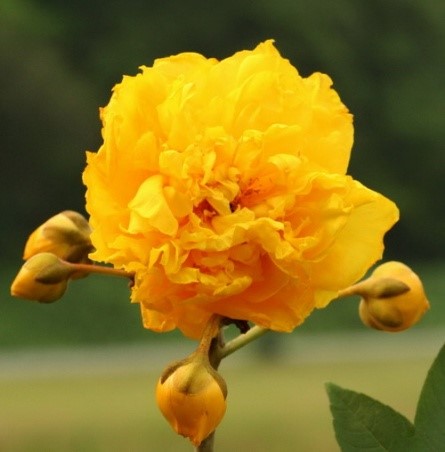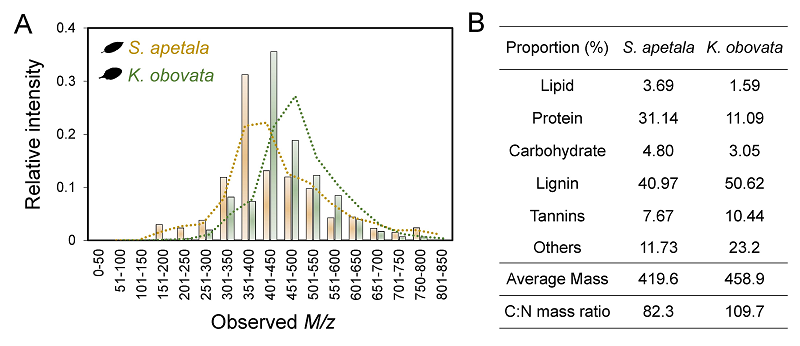

Getting here
-
Saltmarsh is a major contributor to global blue carbon (C) sink. However, plant invasion and anthropic activities have greatly altered its distribution and its blue C function in the last decades. We used remote sensing and data synthesis to investigate how the four decades of plant invasion...
-
Tropical and subtropical forests play a crucial role in global carbon (C) pools, and their responses to warming can significantly impact C-climate feedback and predictions of future global warming. Despite earth system models projecting reductions in land C storage with warming, the magnitude of...
-
Mangroves, recognized as critical blue carbon ecosystems, play a pivotal role in global carbon capture and storage. However, the mechanisms governing microbial-mediated carbon transformation from leaves to the blue carbon pool during mangrove afforestation remain unclear. Addressing this gap, Dr....
-
Interspecific variations in phenotypic plasticity of trees affected by climate change may alter ecosystem function of forests. Seedlings of four common tree species (Castanopsis fissa, Michelia macclurei, Dalbergia odorifera and Ormosia pinnata) in subtropical plantations of southern China were g...
-
Arbuscular mycorrhizal (AM) and ectomycorrhizal (EcM) trees are commonly represented in tropical forests, but their response to warming is generally not known. We conducted a long-term (9-year) field experiment in subtropical China by translocating AM tree species (Machilus breviflora and Schima ...

Tel:0086-20-38314070 Email:yuyan@scbg.ac.cn
Address:No.723,Xingke Road,Tianhe District,Guangzhou,China Postcode:510650
Copyright©South China Botanical Garden All Right Reserved, Powered by scbg.ac.cn


 Blue carbon gain by plant invasion in saltmarsh overcompensated carbon loss by land reclamation[2023-12-26]
Blue carbon gain by plant invasion in saltmarsh overcompensated carbon loss by land reclamation[2023-12-26] Tropical and subtropical forests play a crucial role in global carbon (C) pools, and their responses to warming can significantly impact C-climate feedback and predictions of future global warming. Despite earth system models projecting reductions in land C storage with warming, the magnitude of...
Tropical and subtropical forests play a crucial role in global carbon (C) pools, and their responses to warming can significantly impact C-climate feedback and predictions of future global warming. Despite earth system models projecting reductions in land C storage with warming, the magnitude of... Blue carbon sink capacity of mangroves determined by leaves and their associated microbiome[2023-12-20]Mangroves, recognized as critical blue carbon ecosystems, play a pivotal role in global carbon capture and storage. However, the mechanisms governing microbial-mediated carbon transformation from leaves to the blue carbon pool during mangrove afforestation remain unclear. Addressing this gap, Dr....
Blue carbon sink capacity of mangroves determined by leaves and their associated microbiome[2023-12-20]Mangroves, recognized as critical blue carbon ecosystems, play a pivotal role in global carbon capture and storage. However, the mechanisms governing microbial-mediated carbon transformation from leaves to the blue carbon pool during mangrove afforestation remain unclear. Addressing this gap, Dr.... Interspecific variations in phenotypic plasticity of trees affected by climate change may alter ecosystem function of forests. Seedlings of four common tree species (Castanopsis fissa, Michelia macclurei, Dalbergia odorifera and Ormosia pinnata) in subtropical plantations of southern China were g...
Interspecific variations in phenotypic plasticity of trees affected by climate change may alter ecosystem function of forests. Seedlings of four common tree species (Castanopsis fissa, Michelia macclurei, Dalbergia odorifera and Ormosia pinnata) in subtropical plantations of southern China were g... Arbuscular mycorrhizal (AM) and ectomycorrhizal (EcM) trees are commonly represented in tropical forests, but their response to warming is generally not known. We conducted a long-term (9-year) field experiment in subtropical China by translocating AM tree species (Machilus breviflora and Schima ...
Arbuscular mycorrhizal (AM) and ectomycorrhizal (EcM) trees are commonly represented in tropical forests, but their response to warming is generally not known. We conducted a long-term (9-year) field experiment in subtropical China by translocating AM tree species (Machilus breviflora and Schima ...
